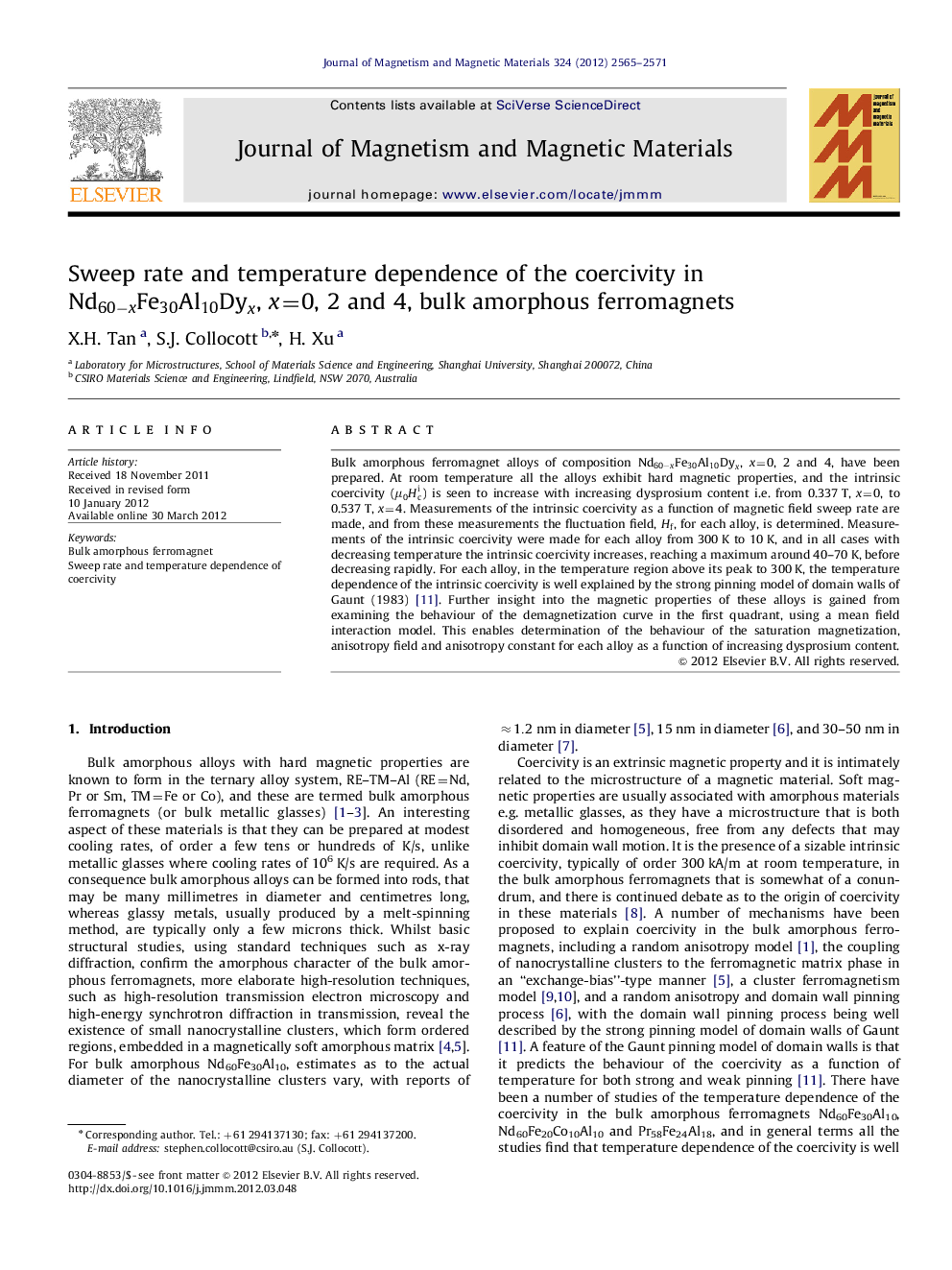| Article ID | Journal | Published Year | Pages | File Type |
|---|---|---|---|---|
| 1800968 | Journal of Magnetism and Magnetic Materials | 2012 | 7 Pages |
Bulk amorphous ferromagnet alloys of composition Nd60−xFe30Al10DyxNd60−xFe30Al10Dyx, x =0, 2 and 4, have been prepared. At room temperature all the alloys exhibit hard magnetic properties, and the intrinsic coercivity (μ0Hci) is seen to increase with increasing dysprosium content i.e. from 0.337 T, x=0, to 0.537 T, x =4. Measurements of the intrinsic coercivity as a function of magnetic field sweep rate are made, and from these measurements the fluctuation field, HfHf, for each alloy, is determined. Measurements of the intrinsic coercivity were made for each alloy from 300 K to 10 K, and in all cases with decreasing temperature the intrinsic coercivity increases, reaching a maximum around 40–70 K, before decreasing rapidly. For each alloy, in the temperature region above its peak to 300 K, the temperature dependence of the intrinsic coercivity is well explained by the strong pinning model of domain walls of Gaunt (1983) [11]. Further insight into the magnetic properties of these alloys is gained from examining the behaviour of the demagnetization curve in the first quadrant, using a mean field interaction model. This enables determination of the behaviour of the saturation magnetization, anisotropy field and anisotropy constant for each alloy as a function of increasing dysprosium content.
► Study of the affect of Dy in NdFeAl based bulk amorphous ferromagnets. ► Shows a few at.% of Dy increases the coercivity by up to 40%. ► The temperature dependence of the coercivity is well explained by a strong pinning mechanism. ► A mean field interaction approach is used to determine the anisotropy field and anisotropy constant.
